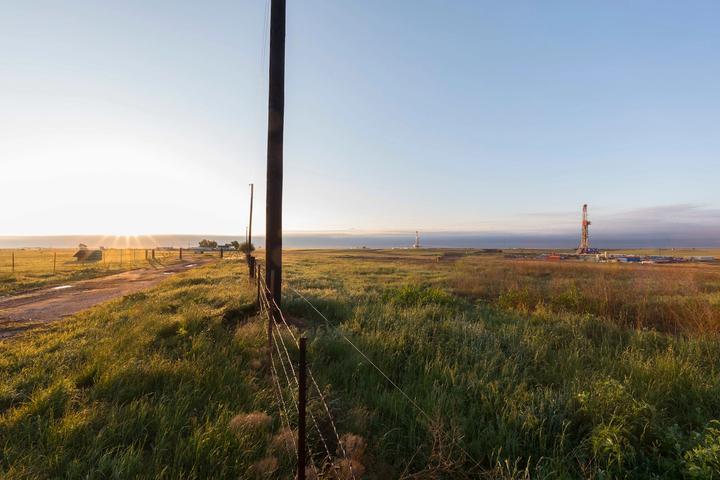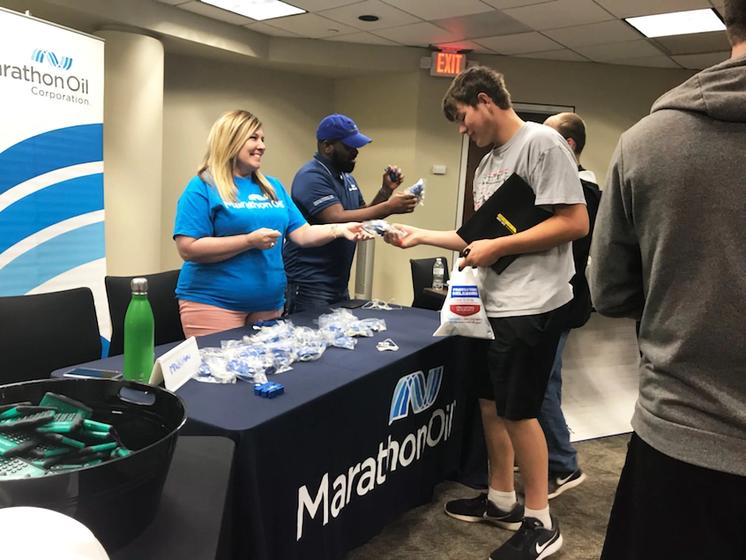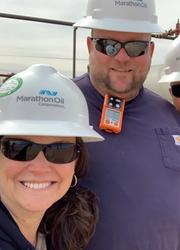
Energize for Safety
An “energized” effort to boost safety awareness within communities along a busy thoroughfare in Oklahoma’s STACK play already is considered a success, even before the data is in. Turnout at events organized by the Energize for Safety Coalition to boost safe driving awareness along State Highway 33 between Kingfisher and Watonga have met or exceeded expectations, so far.
The coalition’s success there is something organizers hope to be able to replicate in other areas of Oklahoma — indeed, even in other states — as it evaluates adding future, potential safety zones along roads and highways that can be dangerous places to travel.

Tom Robins, the coalition's founder and president, said past safety corridor programs included efforts to improve driving conditions within areas of concern using road design improvements and increased enforcement.
While past efforts also included community outreach efforts, Robins said this one goes further because a coalition formed to implement the corridor includes about a dozen energy companies that operate within the play and also involves educational entities, nonprofits and civic organizations.
"We have a coalition committed to … working together," Robins said. “We are excited about the partnerships we have built and the momentum that we have.”
Beyond businesses and community groups, Energize for Safety Coalition members also include representatives from the Oklahoma Highway Safety Office, the Oklahoma Highway Patrol, the Oklahoma Department of Transportation and local emergency response agencies.
Rusty Rhoades, commissioner of Oklahoma’s Department of Public Safety, agreed.
“Many members of the oil and gas industry not only work in this area but live in those communities as well, and they have a vested interest in joining other stakeholders to focus on … working together to keep it safe,” Rhoades said.
The goal of safety corridors is to reduce both numbers and severity levels of crashes along stretches of interstate or regional highways.
This particular 25-mile stretch of SH 33 is notable because it recently has had the highest rate of fatality crashes involving large trucks within the state, officials have said.
Notable changes within the safety corridor include special highway signs and increased enforcement of traffic regulations by law officers, which are common features of past safety zones established within the state. The signs include messaging to make motorists more aware of potential dangers in the area that include large, slow-moving trucks and other turning vehicles. They also remind drivers to buckle up and keep their attention on the road.
It will take a year to determine whether the corridor will improve the road's safety.
Educational Efforts
Efforts to establish this most recent zone included numerous meetings with community stakeholders, including motorists who travel that stretch of road frequently.
Several school programs for younger, less-experienced drivers also were conducted, including one earlier this week in Kingfisher that was held in conjunction with an Oklahoma Energy Resources Board STEM (Science, Technology, Engineering and Math) Night that organizers said more than 700 people attended.

MRO team members participate in a coordinated high school awareness program in Kingfisher, Oklahoma.
While the OERB regularly partners with oil and gas companies, state museums, universities and other educational entities to conduct its STEM events to spark students' interest in those topics, officials said its partnership with the Energize for Safety Coalition also gave attendees a chance to learn more about challenges truck drivers face as they operate their vehicles and about dangers posed by risky behaviors behind the wheel.
The coalition also plans to hold an event at the Chisholm Trail Technology Center, which is located off SH 33 about halfway between Kingfisher and Watonga.
Robins said the Energize for Safety Coalition’s work is getting noticed both inside of Oklahoma and in other states, and they’ve developed a model they hope to carry into the future.
“We wanted to be sure what we are doing here could be replicated," said Mike Patterson, executive director of Oklahoma's transportation department.
"When you are talking about the engagement of the community, the private sector and the public sector, this is amazing."























